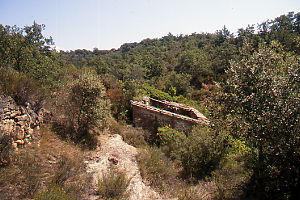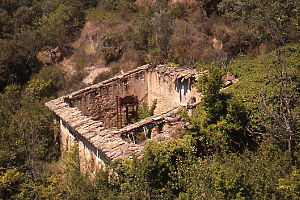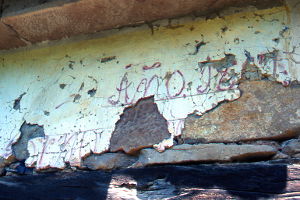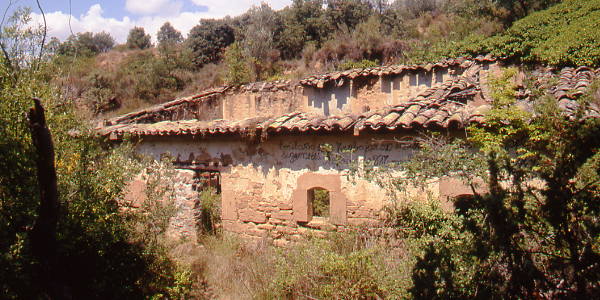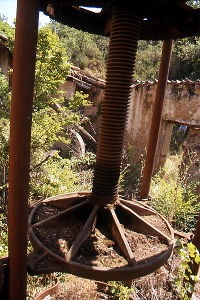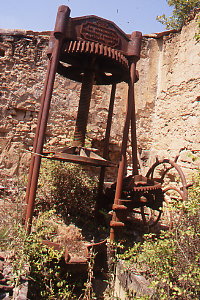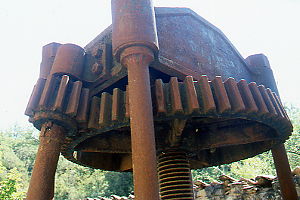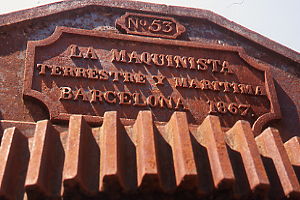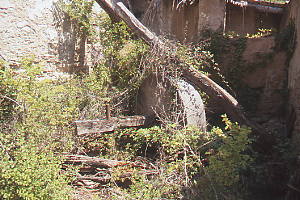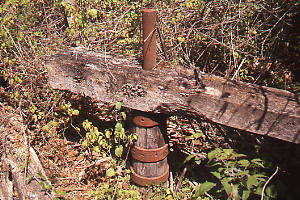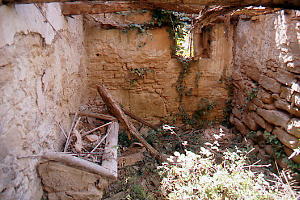Buera is situated not far from Alquézar.
From
Barbastro take the road that longs the Río Vero and passes through Castillazuelo, Pozán and Huerta de Vero.
At some point
Buera is signposted to the right. From the parking at the entry of the
village turn left —follow the signs for the Santuario de Nuestra Señora de Dulcis. Park your vehicle
at the designated space and walk back about 400m to where a dirt road leaves the asphalt road. Follow this road down into
the
Barranco del Pozo
and then up again between the fields until you come at some collapsed constructions: el
Caserío Los Corrales
.
The track turns to the left and that's the point where you should find a path meandering down to the rivulet and the mill (1).
The mill was dilapidated in 2010, has been restored in the years since and is definitely worth a visit.
Pictures: 18.viii.2010


